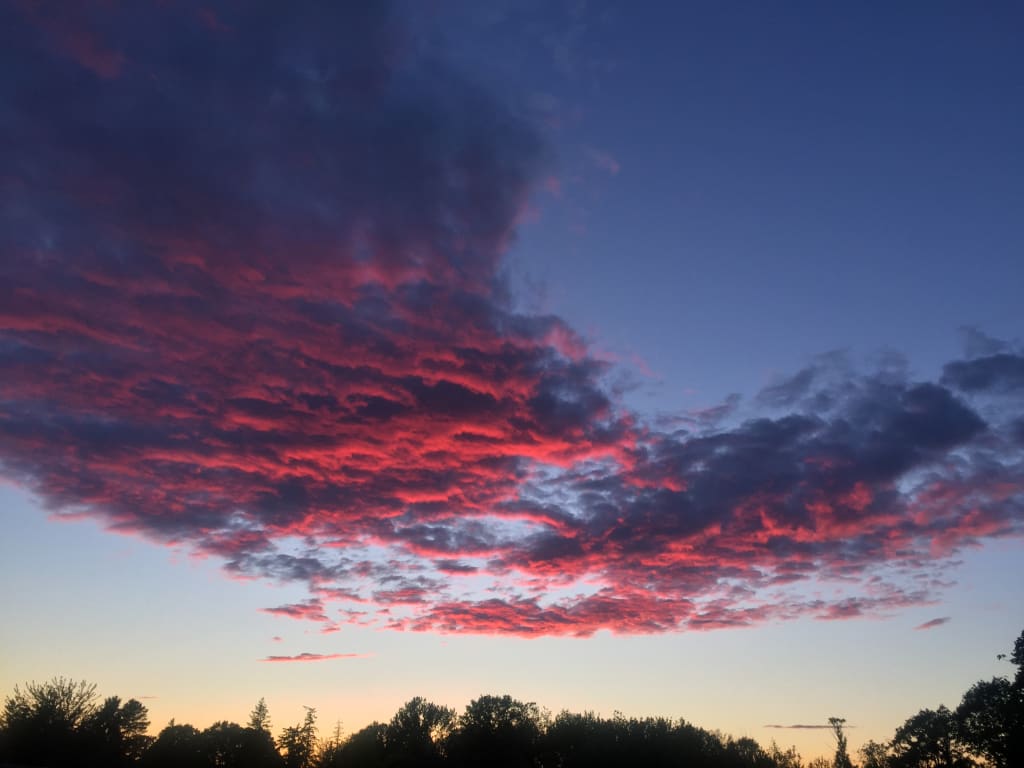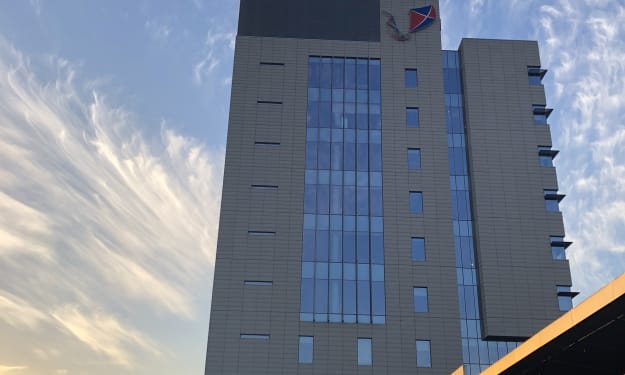
Humanity
Some individuals live their lives without ever having to go through something so traumatic that it changes their perspective on everything. If you stopped for a second to analyze the one hundred things that happen in life all the time, you’d be one step closer to figuring out humanity. My name is Julio Morales and my transition from civilian life to First Responder life made me see the world differently. It made me understand humanity by the interactions that I have with my patients and how I see myself and what I aspire to do with my life. It’s changed my very way of thinking. My field of work is not for the faint of heart. I get to see the worst things ever. Even in all the darkness comes some light and hope.
In high school I never thought I would amount to anything. The school I attended was full of kids that did drugs. I happened to fall into the pit and do a lot of bad things myself. Everyone was out to get you and you could not trust anyone. In a world so cold and dark hope is the last thing you thought you had. For me, falling into drug abuse at a young age did not help. I needed help badly but all I ever wanted to do was help others. No matter who it was if you needed a ride, money, time, a place to stay or food I was there. I strongly believe that no matter what, treat everyone like a human. To let people, know that there are people that still care and that there is still a little bit of humanity left. To this day I have a list of many people that helped me become who I am today. Without them I wouldn’t be here. I wasn’t scared and I trusted people with every bit of my humanity. It only took one person to ask for help that I figured myself out and got on a straight and narrow path. I sobered up and got into college. What people did for me would give me my biggest motivator paying it forward. My normal life as a civilian would change as I transitioned into becoming a first responder EMT.
Becoming an EMT is the first step into becoming a Paramedic. Paramedic is the highest level of prehospital care. Going through the accelerated program of becoming an EMT was one of the hardest yet most gratifying things I’ve done so far in my life. It’s a two-term program condensed into one term. All 39 or 45 chapters are done in 10 weeks on top of your National Registry skills and your State Exam to get your medical license (NREMT). I was going to school from 7:30-3:30 Tuesdays and Thursdays on top of studying and working 2 jobs. I was 18 at the time and I had no clue what I was really getting into as I signed up for the accelerated class. All I knew is I would get to drive an ambulance with lights and sirens and that’s all I wanted to do. Drive fast with sirens. The school aspect of becoming an EMT was worth it. There is a part during the program called “Clinical” and “Internship” that was one rotation in the ER and one rotation in the Ambulance. This helped students decide if this was the right field for them or not. The instructors always spoke about how “you’ll see the real world out there and you’ll realize if you fall under pressure or if you strive in stressful situations”. Finding out which side you fall under would determine your career in EMS since it's always high stress. My first rotation on the ambulance would later define everything I wanted to do and more with EMS. Having to learn medical terminology and having to learn things that could save lives was always the goal.
The first call I ever got on the Ambulance as an EMT intern was a 67-year-old male with a “chief complaint”, or as normal people say, the problem was chest pain. This guy’s heart was so Tachy it could have killed him at a rate of 212 beats per minute. (Tachycardia/Tachy is fast heart rate) (Mayo Clinic). The Paramedic in charge was explaining what he was going to do as we headed to the hospital to help save this man’s life. Unable to do the things he wanted in route once we got to the hospital the ER doctor would later say that the patient was going to be given Adenosine at 6 mg. Now a fun fact about this medication it basically stops your heart. Watching all this made me sweat and a rush of adrenaline spiked in my blood. It was exhilarating. It was like an addiction and I wanted to feel that rush again. Helping people never felt so good. When I found out that Paramedics could do that, I told myself I would want to go into the program.
After finishing the EMT program at PCC, getting my NREMT license and my Oregon State EMT license would be the next step. After passing those exams on the first try was amazing. From what I experienced in the ambulance, helping people is what I wanted to do. It’s what I think I was meant for. Always remembering what people did for me motivated me to continue. Once you become an official EMT you’re licensed but you don’t earn your stripes till you land yourself a job and get experience as an EMT. I applied and landed myself a job at American Medical Response (AMR), a company all people in EMS strived to work for. Landing my first job as an EMT is what officially made me a first responder. The transition was not easy. I used to be in high school and work at Starbucks for a maximum of 8 hours. Now you’re telling me that I’m working on an ambulance and helping people for 12 hours a day? Wow! That is a huge jump. This is where I got to see the real world as I was no longer an intern, I was no longer a barista or a student but a medical provider.
My calls in the beginning always seemed simple. It did not matter what the patient had going on, what I did know is that things can change in a matter of seconds. The calls that made the most impact in my life were not the big cardiac calls, but the ones the patients and I could talk more and get to know them. I’m a talker and I always try to get my patients to engage with me even if they don’t want to talk. Some patients honestly needed more of a therapist than a Paramedic. The thing is our scope is so huge. We can intubate, push cardiac medications, surgically cricothyrotomy, and more. These are all physician level skills but the skills I used the most was my customer service. So, some days I would strictly listen to my patients. In these cases, I would remember my EMT professor saying, “EMS is 20% medicine 80% people to people”. That always was so true to me. This is where a lot of humanity came out, for instance my hospice patients.
Hospice is a very special side of medicine; this is end-of-life care. People at this stage of life are terminally ill and need medical, spiritual, emotional support to help them be comfortable till they pass (Hospice). Hospice has had such a negative connotation over the years because people always think it’s a place to die. It’s more of a place for peace to let go. They don’t teach you much about this in EMT school, but this is where you learn how to be human. At the very end of someone’s life you bring out every ounce of compassion you have, and you don’t care about your problems at home or in your life. You focus on that exact person and that moment. I remember this day like it was yesterday.
I had a patient discharged from the hospital to go back home. The thing was the patient was on hospice and was on end-of-life care. When I approached this patient, I realized that my patient was not talking to me. There was too much brain damage and the cancer had eaten her up to the point she was basically a vegetable. In school they always tell you about the crazy calls and the patients you’ll have but they never train you for this. Our goal as EMT/Paramedics is to preserve life but you’re saying I have to watch someone wither away. There was no medicine needed for this patient and she was not talking so it was going to be a quiet call but when I looked over, I saw the patient’s husband. Let’s call him Bill. As Bill approached me, I introduced myself like I always do. “Hello, I’m Julio EMT with AMR and I’m here to take care of your wife”. As Bill replies back with, “I’m Bill the husband, thank you Julio for taking my wife today.” My partner and I got the patient from the hospital bed into our gurney, and we went back home to lay to rest. The thing was she was my responsibility. I had a duty to take care of her and do everything I could to make her comfortable, but there would not be much I could do. Bill would be accompanying us during the transport, and he would have the honors of sitting in the airway seat. The seat closest to the head of the patient. Then I realized I no longer had one patient but two.
It finally clicked in my head. Her husband was my patient as well, but he needed the type of support that is only found in the soul. As we began our transport, Bill looks down at his wife as if it’s the last time he’ll ever see her. That’s the moment of impact for me as I ask Bill. “Hey Bill, how are you doing? I know your wife is my patient, but I feel the desire to say you’re my patient as well”. That moment I asked the question Bill breaks down crying and lets it all out. As he begins to tell me he’s not okay that he’s managing. The beauty in this is with a simple act of humanity asking how he’s doing he’s able to vent to me for the duration of the transport.
He tells me about what he did for work and what his wife did. He tells me about how they’ve been married for around 70 years and they were high school sweethearts and that he’s had an amazing life with her. Answers I would have never known had I never asked. What was maybe 20 minutes felt like hours as I got deeper into the Life of Bill and his wife. At the end Bill said, “Julio thank you for talking to me today, no one has talked to me lately and that helped me with this process.” When we got to our destination, I realized I took care of him and he was my patient and with every other call I would make sure to look around and give hope to others. For Bill, he needed hope that things would be okay. That someone still cared about him. I never knew would make a difference. I did not change the world, but I changed his world and for me that was enough.
If you told me today that being a Paramedic was the one thing, I'd become six years ago, I would tell you, “what’s a paramedic?” Lucky for me, the life I live now as a Paramedic has made me who I am today. It has changed me, shaped me, and broken me down. I’ve gotten to see the good in humanity and I’ve gotten to see the bad in humanity. At the end of the day my job here is to be a beacon of hope. My job here is to make sure I listen to as many people as I can. For that’s all someone needs to be reminded that there are still people out there with a little bit of humanity.
Works Cited
“Tachycardia.” Mayo Clinic, Mayo Foundation for Medical Education and Research, 30 Oct. 2020,www.mayoclinic.org/diseases-conditions/tachycardia/symptoms-causes/syc-20355127.
“Emergency Medical Technicians (EMT).” National Registry of Emergency Medical Technicians, www.nremt.org/EMT/Certification.
“Hospice Care.” MedlinePlus, U.S. National Library of Medicine, 18 Sept. 2020, medlineplus.gov/hospicecare.html#:~:text=Patient%20Handouts-%20,Summary,peace%2C%20comfort%2C%20and%20dignity.
Limmer, Daniel, et al. Emergency Care, 13th Ed.
About the Creator
Julio
My name Is Julio. I am new to this but this is a little about me. I’m a full time Paramedic.I have been in and out of hospital for seizures. In my short life I have experienced hardships. I want to share it to the world.






Comments
There are no comments for this story
Be the first to respond and start the conversation.